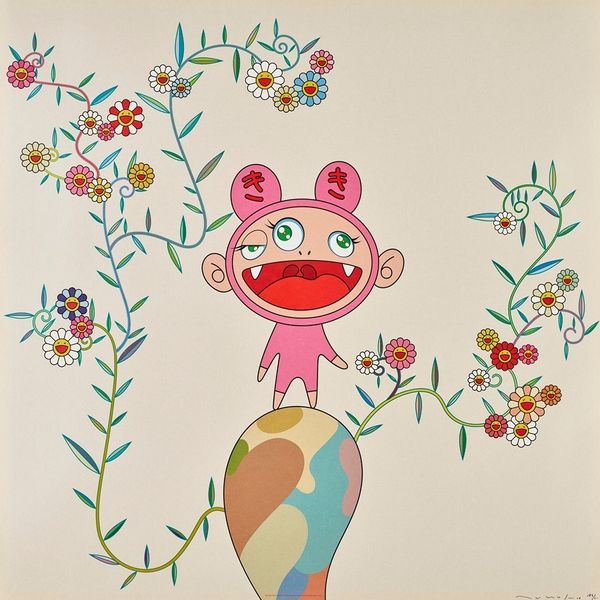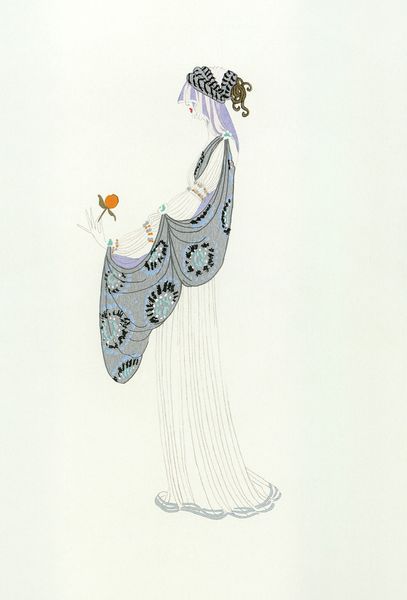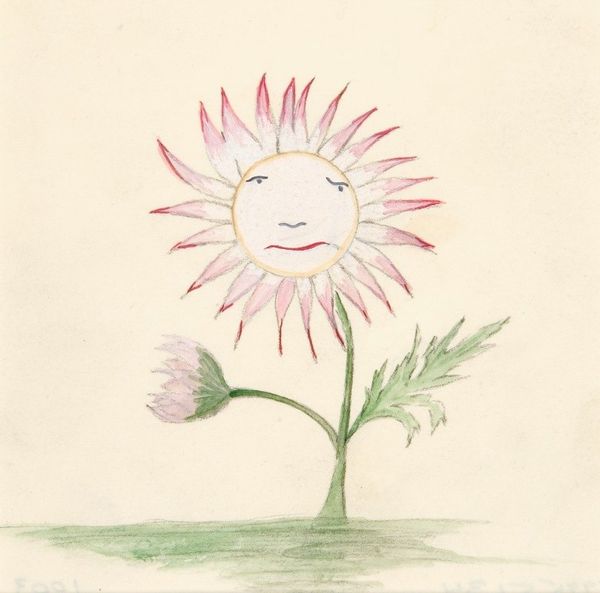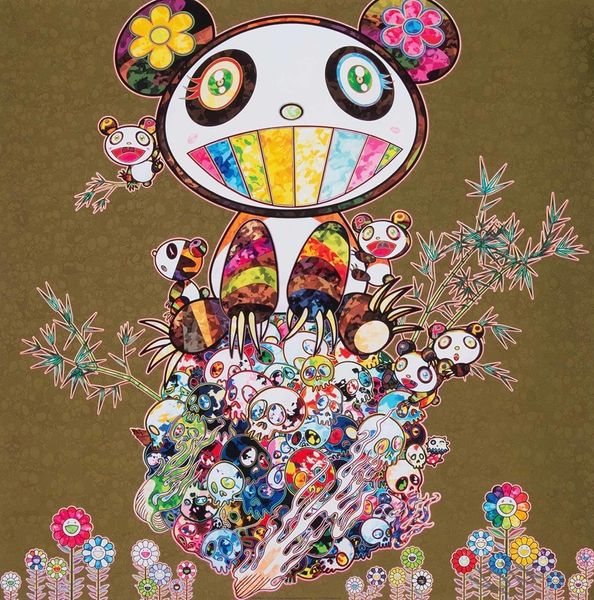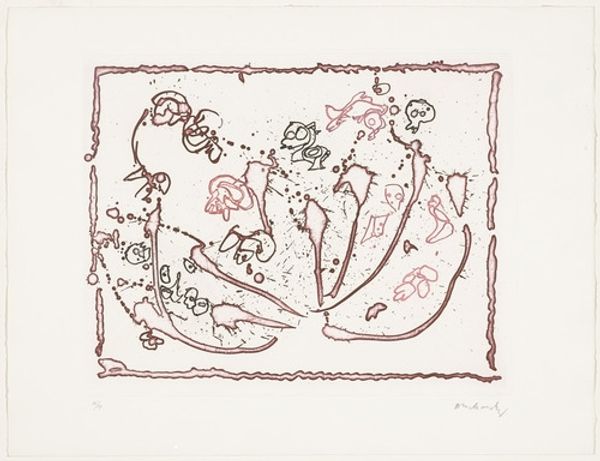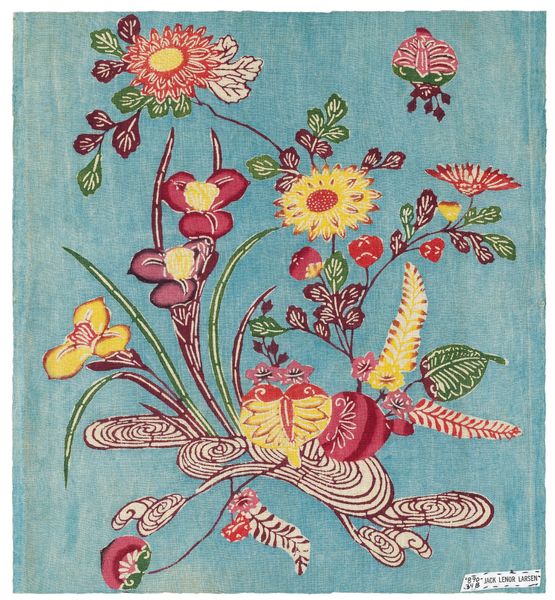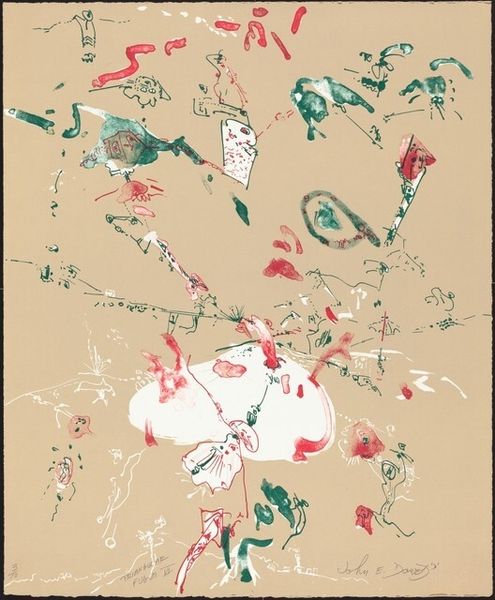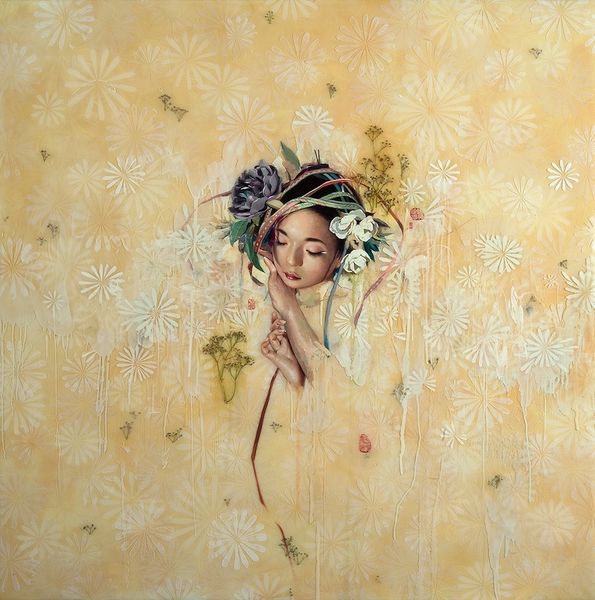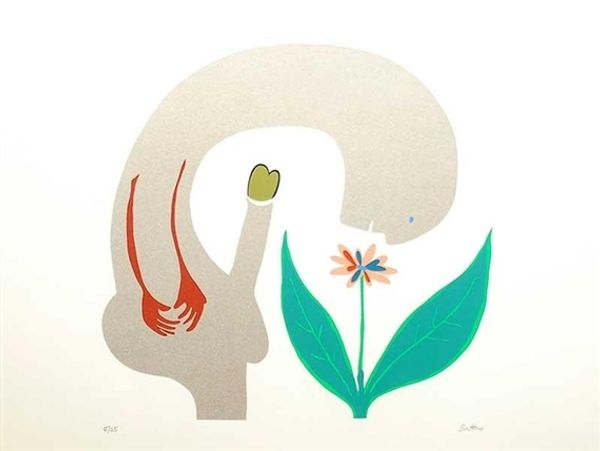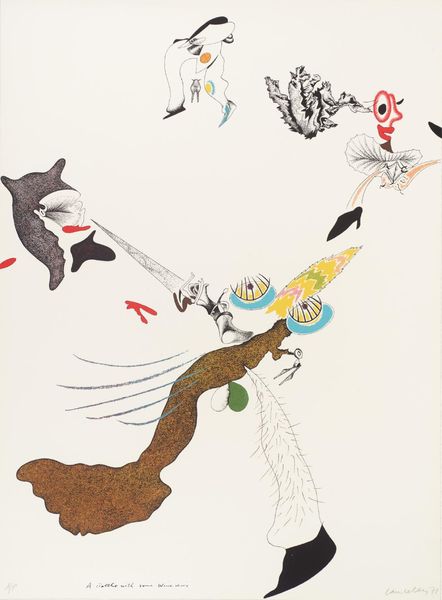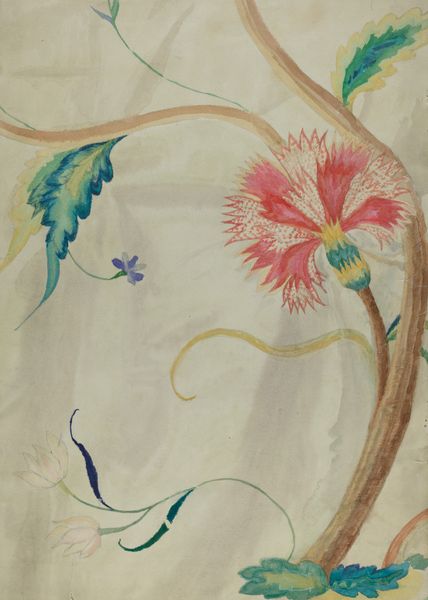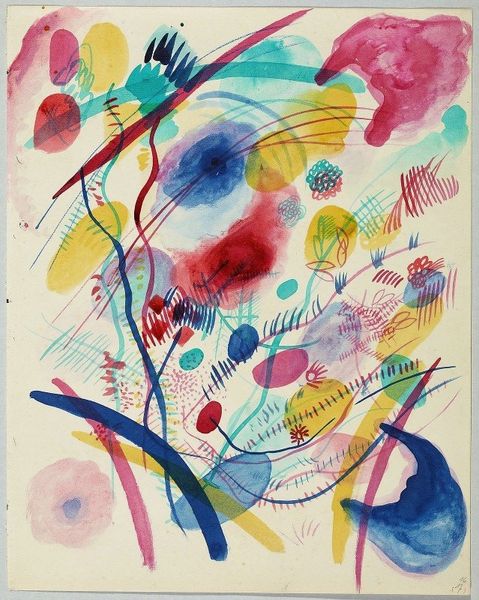
#
neo-pop
Copyright: Modern Artists: Artvee
Curator: Let's discuss Takashi Murakami’s "Genki Ball" from 2001, a vibrant mixed-media piece in his signature pop-art style. Editor: Well, my first impression is the deliberate contrast—that melancholic, almost annoyed facial expression perched atop that explosively cheerful sphere of smiling flowers. There's a real tension there. Curator: Absolutely, and it’s key to understanding Murakami's broader project. These smiley faces, derived from traditional Japanese manga and anime, are powerful symbols. On one level they suggest innocence and joy, yet the almost vacant stare also alludes to the darker undercurrents of contemporary culture. The winking eye reminds me a bit of Surrealism, but perhaps adapted for our media-saturated world. Editor: I agree about the darker elements. The meticulous crafting of this piece—its seamless blending of potentially disparate forms into a cohesive object—hints at a sort of assembly line precision. A precision that also recalls Pop art, its interest in the mechanical reproduction and mass production of imagery and materials. Is it commentary? Celebration? Or just profitable image management? Curator: That’s precisely the question, isn't it? Murakami cleverly subverts those happy signifiers, transforming them into emblems of both global optimism and underlying anxieties. He’s very conscious of how cultural narratives are manufactured and circulated. Editor: The floral ornamentation winding around the composition does seem decorative, pretty even, but it has an undeniably industrial slickness. And to consider the materiality – the physical process needed to produce this combination of forms…It couldn’t have been a solo enterprise. We need to consider labor, I think. Who produced it? How were they compensated? Curator: Definitely important questions about collaborative art production, issues Murakami seems to play on consciously, even if indirectly. His factory model highlights questions about authenticity in contemporary art while still allowing his creative vision to lead. Editor: So the work forces a confrontation of seemingly opposite perspectives: happiness/sadness, global success/personal despair, artisanal craft/mass production… It makes you feel kind of unsettled in its hyper-polished cheerfulness. Curator: Precisely! It's a commentary on cultural branding and a complex response to late capitalism wrapped up in seemingly cute imagery. I feel Murakami wants us to challenge visual narratives constantly. Editor: Ultimately, though, it demonstrates the real labor involved in contemporary artwork even when it aims for maximum commercial success.
Comments
No comments
Be the first to comment and join the conversation on the ultimate creative platform.
